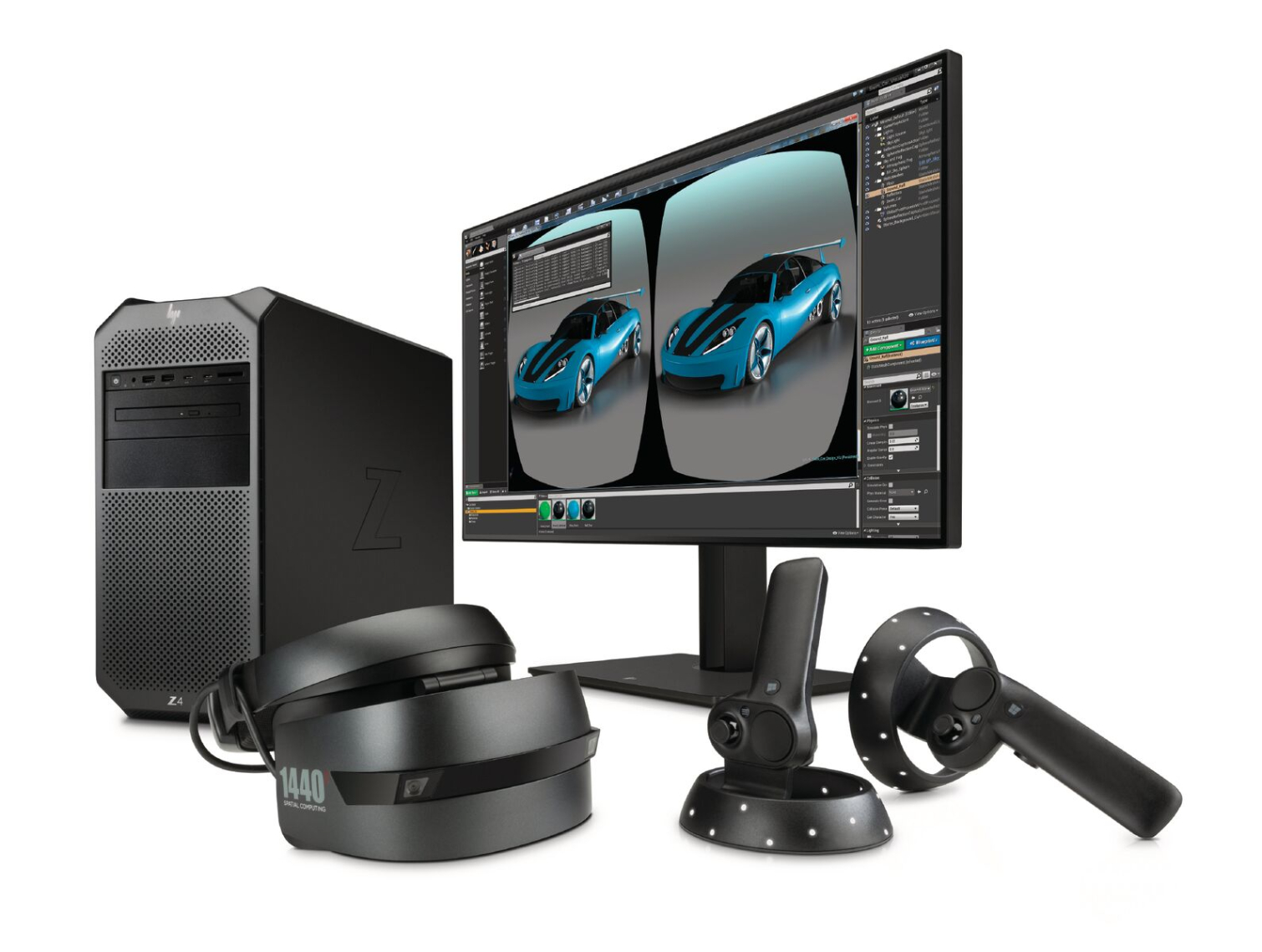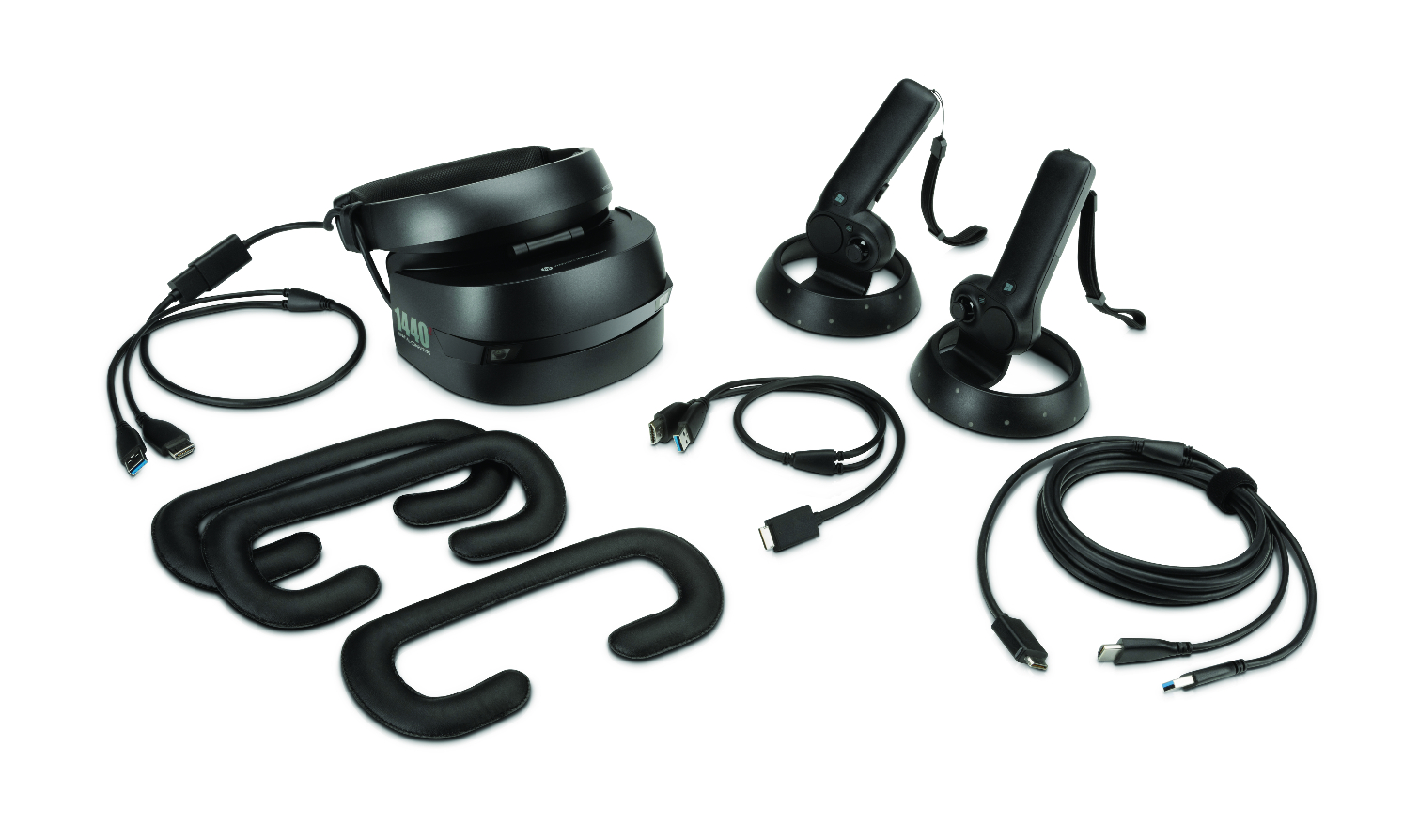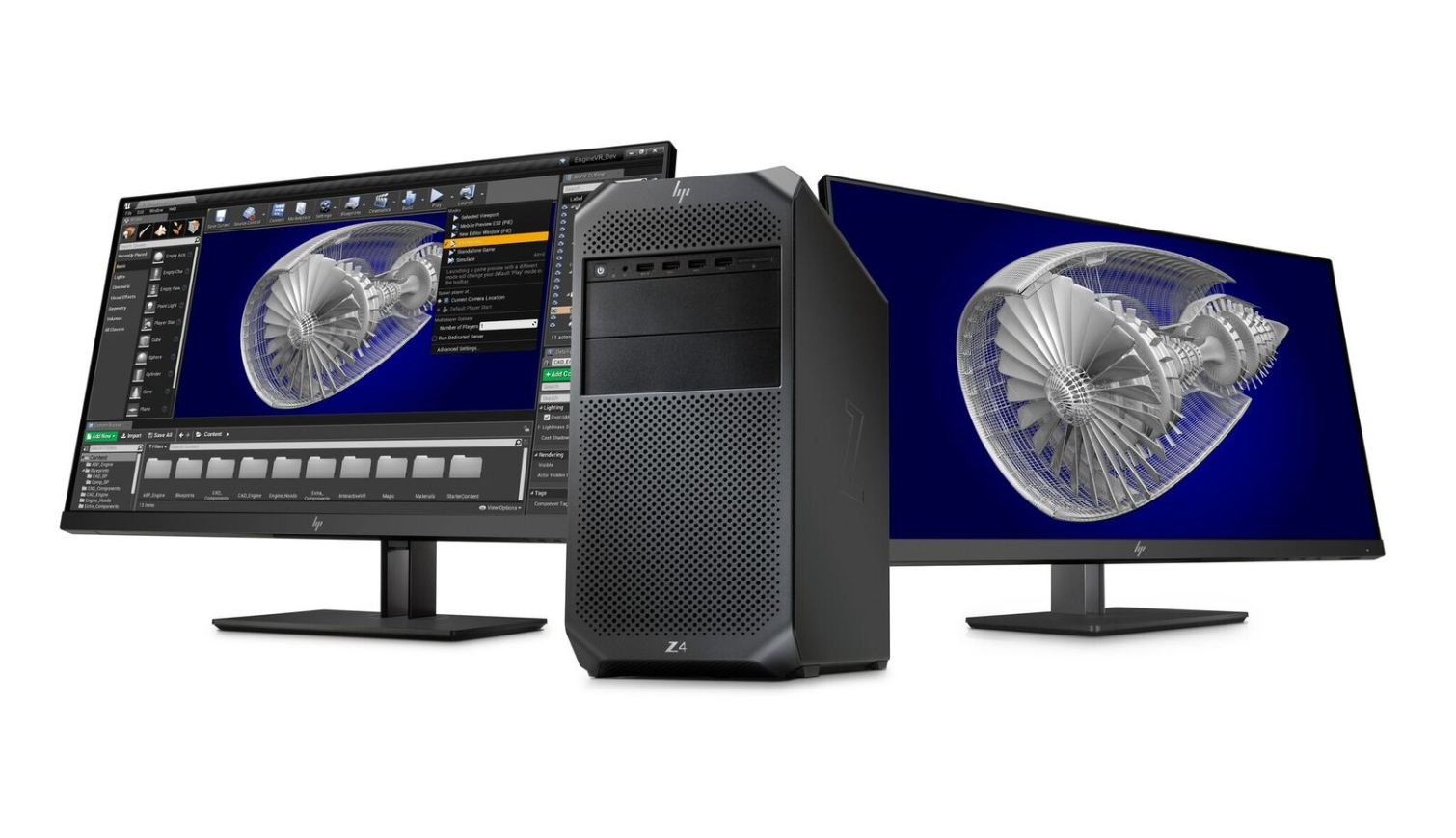HP Doubles Down On VR For Business With New Enterprise Products, Services
HP announced an updated range of products and services that aim to help businesses adopt virtual reality technology.
The first of those announcements is the addition of new configurations for the company’s HP Z4 Workstation. These powerful workstation PCs launched with support for Intel Xeon processors. Now, the HP Z4 Workstations also offer Intel’s more affordable Core X processors. These refreshed Z4 Workstations also support dual graphics to provide increased rendering performance for engineering, simulation, and rendering tasks. These new systems are also well suited for VR. The high-end CPUs and Quadro GPUs would be a great match for collaborative VR platforms, such as Nvidia’s Holodeck.
HP’s Z4 Workstations start at $1,499.
HP also introduced a new VR headset for business use. The Windows Mixed Reality Headset – Professional Edition is a slightly more robust version of the consumer-grade HP Windows Mixed Reality Headset. The updated device is almost identical to the consumer version; it still features the same 2880x1440 display resolution, includes Microsoft’s inside-out tracking solution, and boasts the same adjustable head strap and hinged display. And like the consumer version, it doesn’t include built-in headphones.
“The revamped Z4 workstation, along with our latest HP Windows Mixed Reality Headset and new customer-friendly VR solutions and services, will transform the way products across industries are developed,” said Xavier Garcia, Vice President and general manager, Z Workstations, HP Inc. “Over the past year, HP has launched the world’s most powerful workstation, the most powerful detachable PC, and the first ever professional VR backpack. Today’s news reflects our focus on continuously raising the bar with a portfolio of workstations and VR capabilities that will enable amazing new experiences and define the future of computing.”
The primary difference between the regular version and the Professional Edition is the ability to clean the device. HP recognized that in a corporate or location-based entertainment situation, many people would be sharing the headset on a given day, in which case hygiene is paramount. The Professional Edition headset features cushions that you can remove for cleaning. The foam cushions on most VR headsets are not washable unless you have an aftermarket cushion from a company like VR Cover. However, those products still don’t support cleaning solutions for sanitation. You can wash them with soap and water, but antibacterial wipes will deteriorate the material. Not so with HP's Professional Edition WMR headset. The company said that it designed its cushions for repetitive use and resistance to cleaning solutions.
The HP Windows Mixed Reality - Professional Edition headset also includes a short tether cable for use with the HP Z VR Backpack, so you don’t have to contend with the long dangling cord. The company said the new Professional Edition headset would be available for $449 in March.
Get Tom's Hardware's best news and in-depth reviews, straight to your inbox.
VR Launch Kit
HP also announced the HP VR Launch Kit for Unreal Engine, which should be available Spring 2018. The VR Launch Kit helps CAD designers bring their creations into VR environments. The Launch Kit is a suit of tools that HP and Epic created for businesses, which helps bring architectural data sets into VR for visualization.
The VR Launch Kit includes a utility called the VR Performance Profiler, which gives developers examples of how well their creations would run on different hardware profiles and helps determine the necessary hardware configuration to run the simulation in question. The Launch Kit also includes support for Epic’s Datasmith technology, which automates the conversion of engineering assets, such as CAD drawings, into a VR-ready 3D model. It will even create cross-sectioned models and exploded view models automatically.
Making Enterprise VR Attainable
HP also announced that it extended its Device as a Server (DaaS) program to offer VR solutions that companies can pay for over extended periods of time. HP's DaaS program enables HP to put together customer tailored hardware solutions for any project and help create a payment plan that fits the budget. The DaaS program also enables companies to more effectively plan hardware lifecycles by allowing them to lease equipment instead of buying it outright.
HP wouldn’t provide pricing examples for DaaS solutions. The company said that every contract is different, because they are configured for each customer’s specific needs. HP said that it could build out solutions for any need. HP’s entire workstation lineup, including the HP Z Desktop workstations, the HP ZBook mobile workstations, and the HP Z VR Backpack are all available through the DaaS program--as is the HP Windows Mixed Reality Headset Professional Edition. HP will even bring in third party hardware, such as Oculus Rift or HTC Vive headsets, and offer peripheral accessories for location-based VR entertainment facilities.
Kevin Carbotte is a contributing writer for Tom's Hardware who primarily covers VR and AR hardware. He has been writing for us for more than four years.
-
bit_user Reply
The best thing to be said for Quadro GPUs is that you can actually find them in stock. Usually for their list price, which just goes to show how overpriced they normally are.20672701 said:The high-end CPUs and Quadro GPUs would be a great match for collaborative VR platforms


